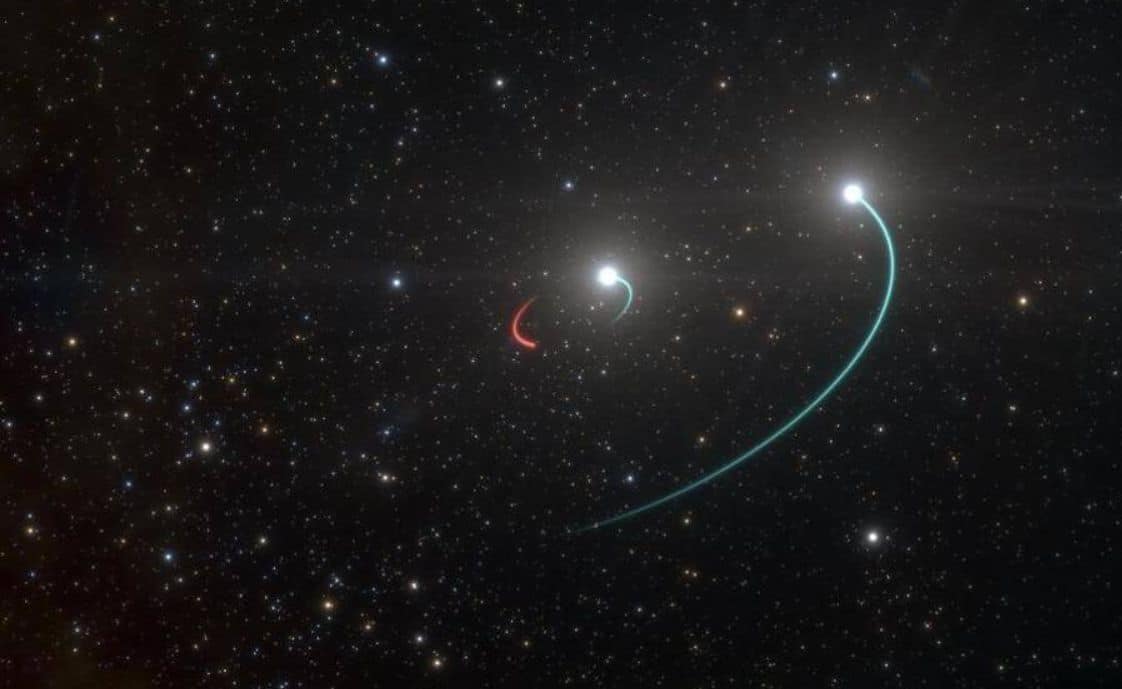Several studies argue that these are two stars with a peculiar orbit
Earlier this year an object was identified as the closest black hole to Earth. However, after analyzing the data, three teams of researchers have concluded that the system in question, called HR 6819, is two stars with a slightly unusual binary orbit.
HR 6819, located about 1,120 light-years away, has been a little puzzle for some time.
According to Science Alert, it was originally thought to be a single Be spectral star, a hot, blue-white star in the main sequence, whose spectrum contains a strong hydrogen emission line, interpreted as evidence of a circumstellar gas disc ejected by the star as it rotates at an equatorial velocity of about 200 kilometers per second.
HR 6819, a system full of mystery
In 2003 it was discovered that HR 6819 was not one, but two stars. Subsequent analyses revealed that one of them, B3 III, with an estimated 6 solar masses, had an orbit of approximately 40 days, but the other, Be, also with an estimated size of about 6 solar masses, appeared to be motionless.
“HR 6819 is a binary system consisting of a massive Be star and a low-mass companion that is the stripped down remnant of a former mass donor star in a mass transfer binary.”
If the two stars comprised a binary of equal mass, they should orbit a mutual center of gravity, they should not be orbiting one above the other, so the astronomers concluded that one of those stars, the mobile B3 III, could be orbiting a third object, one that could not be seen: a black hole.
“The presence of a component of the star Be in the spectrum of HR 6819 suggests another interpretation of the system,” write astronomers Douglas Gies and Luqian Wang of Georgia State University in their work.
“It is possible that stellar component B3 III is actually a stripped, low-mass star that is still relatively young and luminous. In this case, the star Be would be the companion in the 40-day binary rather than a black hole.”
In other words, the much lower mass star B3 III would orbit around the star Be. If this were the case, the orbital motion could be detected in the hydrogen gas surrounding the star Be: it would move almost imperceptibly when pulled by the smaller star.
A puzzle of orbits
Both researchers carefully studied the hydrogen emission in the spectrum of the system and found that the hydrogen disk surrounding the star Be did indeed show a 40-day periodicity in both the Doppler shift and the shape of the emission line. This is consistent with the orbit of the star B3 III, as would be expected if the system were an unequal mass binary.
“The orbital motion of the Be star obviates the need for a black hole to explain the B star’s motion”
“This indicates,” they explain, “that HR 6819 is a binary system consisting of a massive Be star and a low-mass companion that is the stripped down remnant of a former mass donor star in a mass transfer binary.”
In other words, the star Be absorbed a lot of material from the star B3 III, making it much smaller. There is, according to the team, recent evidence to suggest that many Be stars are the product of this process. According to his calculations, the star Be would have about 6 solar masses, as found previously; but the star B3 III would have between 0.4 and 0.8 solar masses.
Three rebuttal investigations
“The luminous and low-mass companion in the HR 6819 system may represent a rare and important case in which the companion has recently completed mass transfer and has yet to descend to the white dwarf cooling stage of evolution,” they affirm.
In a second work, a team of astronomers led by Julia Bodensteiner, from KU Leuven University (Belgium), independently examined the hydrogen emission from the star Be, and carried out an orbital analysis of the system. They came to almost exactly the same conclusion.
And, in a third article, astronomers Kareem El-Badry and Eliot Quataert from the University of California at Berkeley also analyzed the spectra of the system, obtaining masses of 0.47 and 6.7 solar masses for the stars B3 III and Be, respectively.
“The orbital motion of the star Be obviates the need for a black hole to explain its motion,” they point out.
